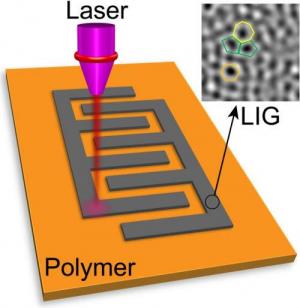Chinese scientists design a flexible graphene-based energy storage membrane
Researchers from Tsinghua University in China have designed a low-cost energy storage device using a TiO2-assisted UV reduction of sandwiched graphene components. The sandwich structure consists of two active layers of reduced graphene oxide hybridized with TiO2, with a graphene oxide separator (rGO-TiO2/rGO/rGO-TiO2). In the device, the separator layer also acts as a reservoir for the electrolyte, which affects ion diffusionâa known problem for layered membrane devicesâand affects both the capacity and rate performance.

The team explained that a step-by-step vacuum filtration process is used to form the membrane structure, and the amount of graphene oxide used in the filtration solutions can be adjusted to precisely tune the thickness of each layer. Irradiation of the dried membrane with UV light then reduces the graphene oxide to rGO with assistance from the TiO2.







